
Charles Allan Grafly, Jr. was an American sculptor, and teacher. Instructor of Sculpture at the Pennsylvania Academy of the Fine Arts for 37 years, his students included Paul Manship, Albin Polasek, and Walker Hancock.

Harry Lee Gatch was a twentieth-century American artist known for his lyrical abstractions and his ability to find "a fresh approach" to painting the figure and nature "through interwoven patterns of flattened figures" and a Fauvist-inspired sense of landscape.
Bo Bartlett is an American Realist painter working in Columbus, Georgia and Wheaton Island, Maine.
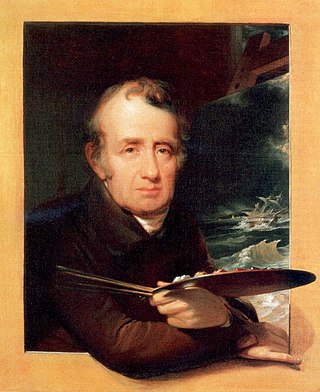
Thomas Birch was an English-born American portrait and marine painter.
David Frost Sellin was an American art historian, curator, educator, and author. He taught at a number of universities, worked on the staffs of several museums, and served as curator of the U.S. Capitol, 1976-1980.

Alice Kent Stoddard (1883–1976) was an American painter of portraits, landscapes, and seascapes. Many of her works, particularly portraits, are in public collections, including University of Pennsylvania's portrait collection, Woodmere Art Museum, and other museums. She lived and painted on Monhegan Island in Maine, an enclave of artists. During World War II, she worked as a combat artist and drafted designs for airplanes. She married late in life to Joseph Pearson, who had been a friend and taught at the Pennsylvania Academy of the Fine Arts.
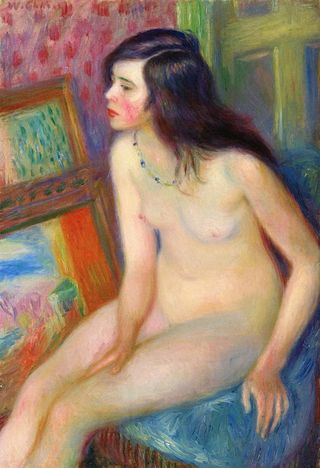
Joseph E. Temple Fund Gold Medal (defunct) was a prestigious art prize awarded by the Pennsylvania Academy of the Fine Arts most years from 1883 to 1968. A Temple Medal recognized the best oil painting by an American artist shown in PAFA's annual exhibition. Recipients included James Whistler, John Singer Sargent, Winslow Homer, Thomas Eakins, Robert Henri and Edward Hopper.
Lucy Ellen Hayward Barker was an American painter.

Emily Clayton Bishop was an American prize-winning sculptor. Although she died at a young age, her works in bronze and plaster are found in museum collections such as the Smithsonian American Art Museum and in shows such as Modern Women at PAFA (2013). Her childhood home, the Emily Clayton Bishop house, is a Maryland State historic site. The home sold in 2019 for $115,000.

Walter Elmer Schofield was an American Impressionist landscape and marine painter. Although he never lived in New Hope or Bucks County, Schofield is regarded as one of the Pennsylvania Impressionists.

Sarah Jane Blakeslee was an American landscape and portrait painter.
Seymour Remenick was a Philadelphia-based artist and teacher, mostly known for landscapes, but who also painted a variety of other subjects.
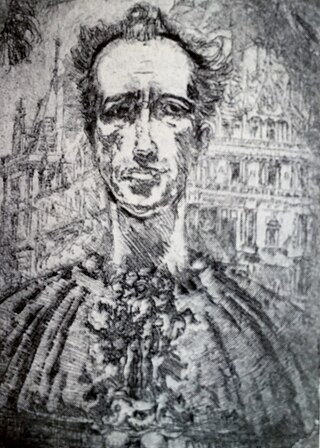
Clifford Isaac Addams was an American painter and etcher, and a protégé of James McNeill Whistler.
Sidney Goodman was an American figurative painter and draftsman from Philadelphia, PA who explored the human form. Goodman received public notice in the early 1960s for his oil paintings, leading to his inclusion in the 1973 Whitney Biennial. In 1996, the Philadelphia Museum of Art presented a retrospective show of Goodman's paintings and drawings.

Norman Carton was an American artist and educator known for abstract expressionist art. He was born in the Ukraine region of Imperial Russia and moved to the United States in 1922 where he spent most of his adult life.
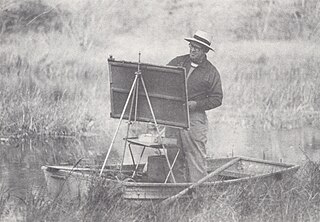
Roswell Weidner was an American artist known for his paintings, charcoal and pastel drawings, and prints. His subject matter included still life, landscapes, and portraits. He was a student at the Pennsylvania Academy of the Fine Arts (PAFA) city school and country school in Chester Springs, and the Barnes Foundation. He worked in the Works Progress Administration Arts Project during the Great Depression and in a shipyard as an expediter during World War II. Weidner began teaching at the Pennsylvania Academy of the Fine Arts in 1938. He was associated with the academy for 66 years, first as a student and later as a teacher, until his retirement in 1996.

Anna Margaretta Archambault (1856–1956) was an American artist and author. She is best known for her 1924 book A Guide Book of Art, Architecture, and Historic Interests in Pennsylvania, which remains in print as of 2020.
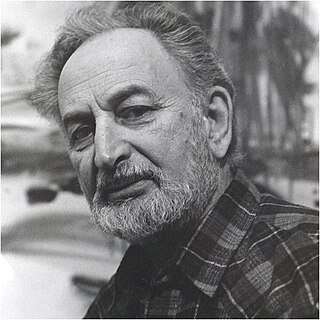
Hugh Mesibov was an American abstract expressionist artist who began his career as a federal artist for the Works Progress Administration during the Great Depression and later became a member of the 10th Street galleries and part of the New York School during the 1940s-60s. His work has elements of the mid-20th-century New York artistic experience such as Surrealist and Abstract Expressionist and figurative aspects across several media such as watercolor, oil, and acrylic as well as etchings, lithographs and monoprints. His work has received a global reputation and is included in many collections in the United States and worldwide.

Joseph Thurman Pearson Jr. was an American landscape and portrait painter, and an instructor at the Pennsylvania Academy of the Fine Arts in Philadelphia.

Louis B. Sloan was an African American landscape artist, teacher and conservator. He was the first Black full professor at the Pennsylvania Academy of the Fine Arts (PAFA), and a conservator for the academy and the Philadelphia Museum of Art. Although he painted urban neighborhoods and other cityscapes, he was mostly known for his plein-air paintings.
















